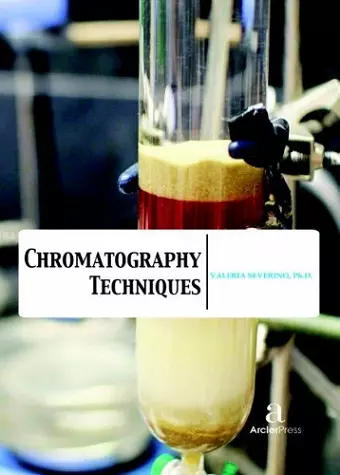Chromatography Techniques
Format:Hardback
Publisher:Arcler Education Inc
Published:30th Nov '16
Should be back in stock very soon

Chromatography is a method used by scientists for separating organic and inorganic compounds so that they can be analyzed and studied. By analyzing a compound, a scientist can figure out what makes up that compound. Chromatography is a great physical method for observing mixtures and solvents. Chromatography techniques represent one of the most commonly used methodologies to separate components of complex mixtures. In any chromatographic technique, a stationary phase usually a solid, thick liquid, or bonded coating that stays fixed in one place, and a mobile phase or eluent (usually a liquid or gas) moves through it or across. Described for the first time in the early 1900s to separate plant pigments, it is now used in many application fields. Nowadays, the knowledge base of all the kind of chromatography is well known and described and several efforts are made to improve classical chromatographic techniques with high performance instrument, such as mass spectrometers.
In this book, some recent interesting applications of principal types of chromatography are proposed. In particular, the five principal kind of chromatography (i.e. gas, liquid, thin-layer, ionic and molecular exclusion chromatography) are reviewed, focusing on innovative applications in basic and clinical research, food and plant sciences, pharmaceutical and environmental fields. Finally, an example of high-throughput approaches based on chromatography and mass spectrometry for the study of plasma lipid biomarkers for the diagnosis of breast cancer is proposed.
Chromatography is important because it is a versatile and small quantities of a material can be separated with ease, it is fast and accurate if the hardware is maintained. Chromatography is one of the most common techniques in analytical technology and needs only a few micrograms of material in order to work. Chromatography has numerous applications in biological and chemical fields. It is widely used in biochemical research for the separation and identification of chemical compounds of biological origin. In the petroleum industry the technique is employed to analyze complex mixtures of hydrocarbons. As a separation method, chromatography has a number of advantages over older techniques—crystallization, solvent extraction, and distillation.
ISBN: 9781680944129
Dimensions: unknown
Weight: unknown
184 pages